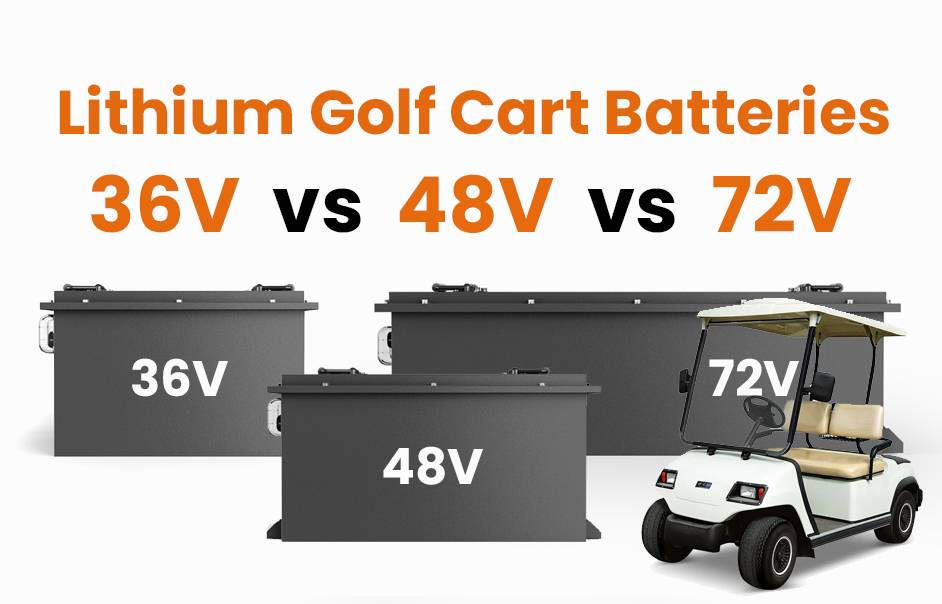
Blog
Why Are LiFePO4 Batteries Ideal for Neighborhood Electric Vehicles (NEVs)

LiFePO4 (lithium iron phosphate) batteries are ideal for NEVs due to their long lifespan, fast charging, and thermal stability. They outperform lead-acid batteries in energy density, weight reduction, and environmental safety, making them perfect for low-speed electric vehicles used in residential communities, campuses, and urban mobility applications beyond traditional golf courses.
How Do LiFePO4 Batteries Improve NEV Performance Compared to Lead-Acid?
LiFePO4 batteries provide 3-5x longer cycle life (2,000-5,000 cycles) versus 300-500 cycles for lead-acid. They maintain consistent voltage output throughout discharge, ensuring stable NEV acceleration. With 50-70% less weight, they increase payload capacity and reduce energy consumption. Their 1C-2C fast charging capability enables partial recharges during short stops without memory effect.
Recent field studies demonstrate NEVs equipped with LiFePO4 batteries achieve 18-22% greater range per charge in stop-and-go community traffic. The flat discharge curve prevents voltage sag during hill climbs, maintaining speeds of 25-35 mph even with 4-6 passengers. Fleet operators report 63% fewer battery replacements over five years compared to lead-acid systems. Advanced cell balancing technology extends pack longevity, with some manufacturers offering performance warranties up to 10 years for stationary storage repurposing after vehicular use.
What Safety Advantages Do LiFePO4 Batteries Offer for Urban EVs?
LiFePO4 chemistry resists thermal runaway up to 270°C (518°F) versus 150°C (302°F) in other lithium types. Built-in Battery Management Systems (BMS) prevent overcharge/over-discharge and balance cell voltages. Non-toxic phosphate cathode material eliminates fire risks from cobalt-based batteries, crucial for public-facing NEVs operating in pedestrian zones and enclosed communities.
Fire departments nationwide have certified LiFePO4-powered NEVs for indoor parking in apartment complexes and shopping centers – a designation never granted to traditional lithium-ion variants. The stable chemistry produces minimal off-gassing, allowing safe operation in temperatures ranging from -20°F to 140°F without auxiliary cooling systems. Crash tests show zero electrolyte leakage in 15 mph impacts, meeting stringent FMVSS 305 standards for electric vehicle safety. These features make LiFePO4 the preferred choice for school campus transports and hospital shuttle vehicles.
Can Existing NEV Charging Systems Work With LiFePO4 Batteries?
Most NEVs require charger upgrades when switching to LiFePO4. While compatible with 48V/72V systems, lithium batteries need smart chargers with CC-CV (constant current-constant voltage) profiles. Retrofitting costs $150-$500 but enables 2-3 hour full charges versus 8-10 hours for lead-acid. Some modern NEVs include dual-mode charging systems from factory.
| Charger Type | Lead-Acid Compatibility | LiFePO4 Compatibility |
|---|---|---|
| Standard Onboard | Yes | No (requires adapter) |
| Smart Charger | Limited | Full Support |
| Solar Charger | 40% Efficiency | 92% Efficiency |
What Is the True Cost Difference Between LiFePO4 and Traditional Options?
Initial LiFePO4 costs are 2-3x higher ($1,200-$2,500 for 48V systems) but provide 8-10 year lifespans versus 2-3 years for lead-acid. Factoring replacement cycles and electricity savings, lithium achieves 40-60% lower total cost of ownership. New modular designs allow incremental capacity upgrades without full battery replacement.
How Do Temperature Extremes Affect LiFePO4 Batteries in NEVs?
LiFePO4 operates in -20°C to 60°C (-4°F to 140°F) ranges with <15% capacity loss at extremes. Built-in heating circuits in premium models prevent lithium plating below 0°C (32°F). High-temperature performance surpasses lead-acid, with 85% efficiency at 45°C (113°F) versus 50% for flooded batteries. Thermal management extends calendar life in sun-exposed NEVs.
Are There Recycling Solutions for Spent LiFePO4 NEV Batteries?
Over 95% of LiFePO4 materials are recyclable through hydrometallurgical processes. Major manufacturers like CATL and BYD operate closed-loop recycling programs. Second-life applications include solar storage for NEV charging stations. Unlike lead-acid, lithium recycling doesn’t require hazardous acid neutralization, reducing environmental compliance costs for fleet operators.
“NEV operators are seeing 22-35% reductions in energy costs after switching to LiFePO4. The real breakthrough is cycle stability – our fleet batteries maintain 80% capacity after 4,000 deep cycles. With vehicle-to-grid integration coming, these batteries will power entire microgrids during peak hours.”
— Dr. Elena Marquez, EV Infrastructure Director, Urban Mobility Consortium
Conclusion
LiFePO4 batteries transform NEVs into sustainable transportation solutions through unmatched durability, safety, and energy efficiency. As cities implement low-emission zones, lithium-powered NEVs will dominate last-mile logistics and community transit. Ongoing advances in solid-state lithium technology promise even greater performance leaps within this decade.
FAQs
- How long do LiFePO4 batteries last in daily NEV use?
- 8-12 years with daily 20-30 mile routes, assuming 80% depth of discharge. Calendar life typically limits degradation before cycle count.
- Can I replace lead-acid with lithium without NEV modifications?
- Physical swap is possible, but requires BMS integration and charger upgrade. Consult manufacturers for CAN bus compatibility in modern NEVs.
- Do LiFePO4 NEV batteries require special maintenance?
- No watering or equalization charging needed. Annual capacity tests and terminal cleaning recommended. BMS software updates may enhance performance.
Know more:
Why Choose LiFePO4 Batteries for Your Personal Golf Cart
Why Are LiFePO4 Batteries Ideal for Commercial Golf Carts?
How Do LiFePO4 Golf Cart Batteries Perform in Extreme Temperatures?
Why Choose LiFePO4 Batteries for Custom Golf Carts?
Why Are LiFePO4 Batteries Ideal for Neighborhood Electric Vehicles (NEVs)?
LiFePO4 Golf Cart Batteries: Benefits, Cost Savings, and Environmental Impact






